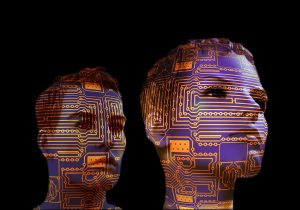Everything You Need to Know About Defending Against Deepfakes
A celebrity acts completely out of character in a video interview. A politician says something disparaging and controversial in a pre-recorded speech. An executive admits, on camera, to a crime they did not commit.
These are all deepfakes, though you wouldn’t know it at a glance. Although the name sounds somewhat ridiculous, they’re absolutely something that should concern you. Their potential applications are many and varied, going well beyond simpler practical jokes.
What Are Deepfakes?
In simple terms, a deepfake is media created through artificial intelligence and machine learning. The creator first gathers as much data as they can about the target, generally photos and videos depicting their movement, mannerisms, voice, and facial expressions. From there, they can use a series of algorithms to compile that data into a convincing forgery.
Initially, these forgeries were easy to identify, lacking the ability to convincingly mimic things such as breathing, involuntary muscle movement, and blinking. As the underlying technology has grown more advanced, however, deepfakes have gotten more refined, more convincing, and easier to produce. And that’s a problem.
Even an unconvincing deepfake has the capacity to cause significant reputational damage. There will always be people willing to believe the worst about someone, people willing to share damaging content if it pertains to someone they dislike or disagree with. And there will always be individuals looking to use image, vocal, or video alteration to blackmail or discredit their opponents — everyone from journalists to whistleblowers to politicians to business leaders.
How Do I Protect Myself From Deepfakes?
The bad news is that on your own, you can’t. Unless you want to functionally turn yourself into a digital ghost, there’s nothing to stop someone from producing deepfake content that targets you. What you can do is train yourself to spot the signs that a video is fake — and share that knowledge with friends, family, and colleagues.
These include:
- A strange, uncomfortable sensation that you can’t quite place.
- Strange shifts or inaccuracies in lighting.
- Occasional jerky or unusual movements.
- Uneven or unnatural intervals of subconscious actions such as blinking or breathing.
Whenever someone receives a video in which someone appears to be acting out of character, their first instinct should be skepticism. They should verify that the content they have received is, in fact, real before they themselves share it. A bit of suspicion is never a bad thing, especially now.
Beyond that, basic security advice still applies:
- Require 24-hour waiting periods on electronic fund transfers and account changes to defend against deepfake-aided fraud.
- Use a password manager, a VPN, network monitoring software, and antimalware tools.
- Keep all your systems up to date.
- Train your employees in basic mindfulness, and practice it yourself.
What’s Being Done to Counter Deepfakes?
Unfortunately, the solutions described above are only short-term. It stands to reason that as deepfakes evolve, ‘uncanny valley’ moments will become increasingly rare. The good news is that it’s not as though the tech sector is facing the threat represented by deepfakes lying down.
Quite the contrary.
Media markers inserted into photos and video can act as proof that an image is genuine, while their absence can indicate tampering. There’s also anti-deepfake AI on the rise, such as tools capable of concealing the pixel patterns deepfake software relies on to create its content. Finally, several governments are exploring the possibility of anti-deepfake legislation (though given the track record lawmakers have of keeping up with technological progress, I’d not hold my breath in that regard).
Don’t Get Faked Out
As noted by Wired Magazine, the majority of deepfakes currently in circulation are pornographic in nature. And as of 2019, reports CNN, there were at least 14,678 deepfake videos online, an 84 percent year-over-year increase. This number is only likely to increase, and there’s no guarantee that porn and pranks will remain the only things they’re used for.
Deepfake media is flexible enough to be used by almost anyone, for any end. It’s important to be aware of this rising threat. Because the more you do to prepare yourself now, the less potential damage a deepfake can do to you later.
About the Author
Tim Mullahy is the Executive Vice President and Managing Director at Liberty Center One, a new breed of data center located in Royal Oak, MI. Tim has a demonstrated history of working in the information technology and services industry.












